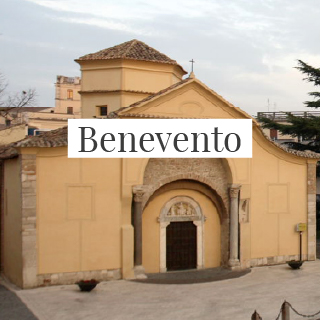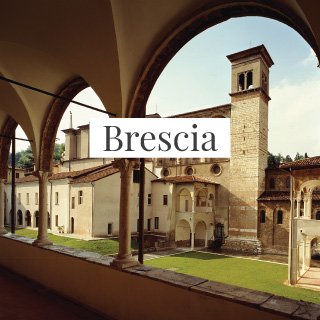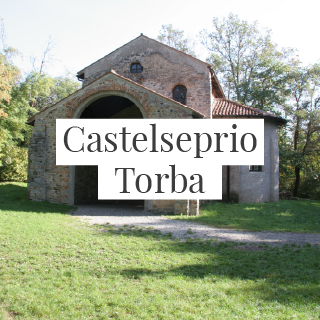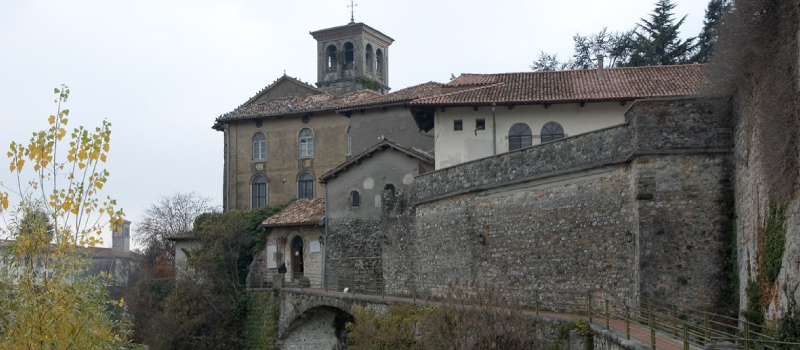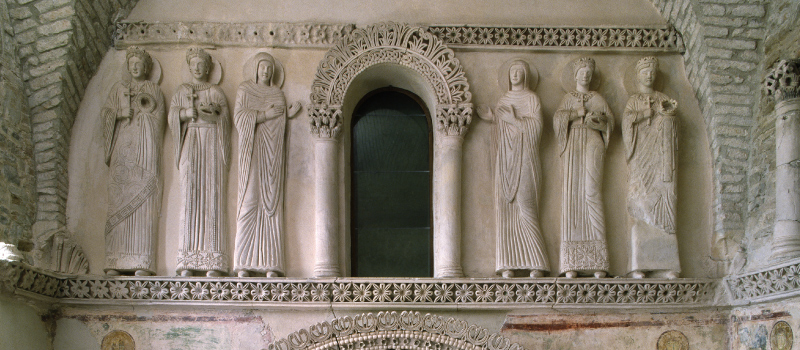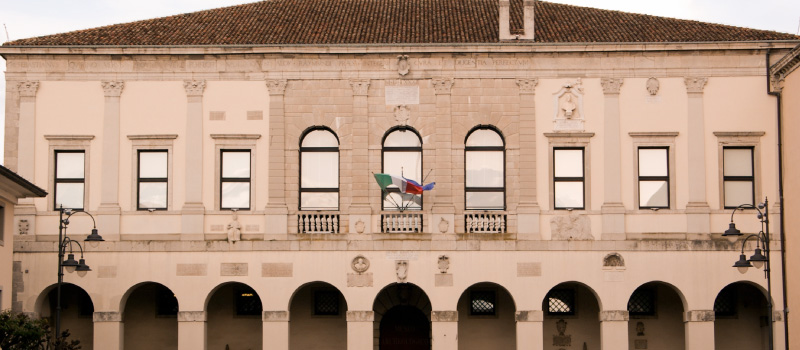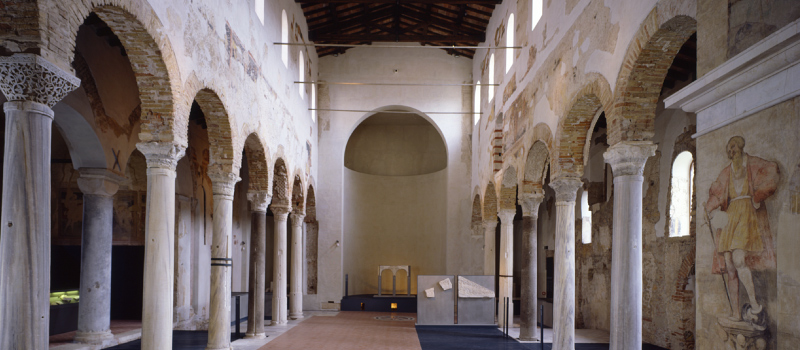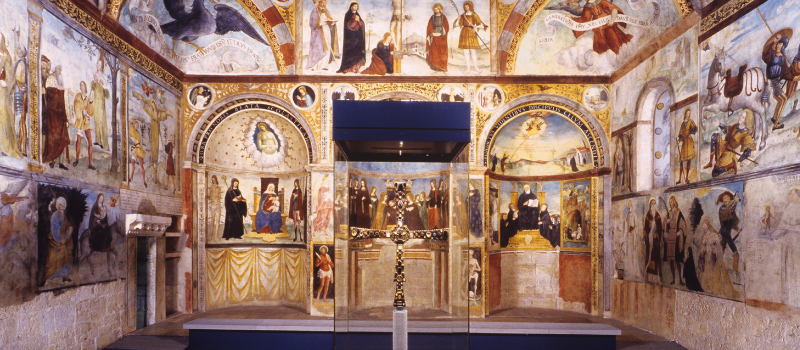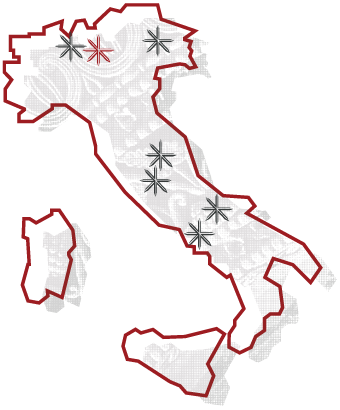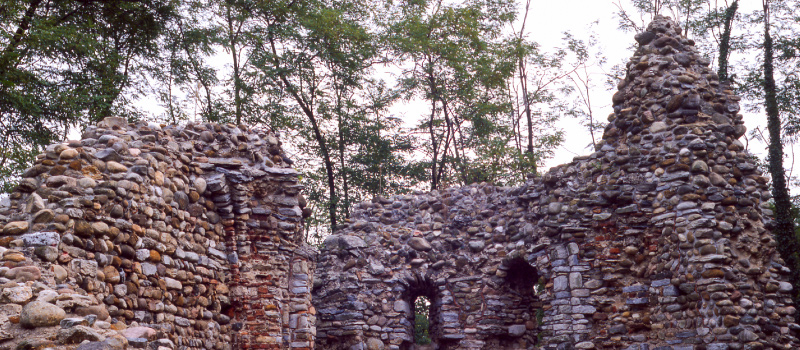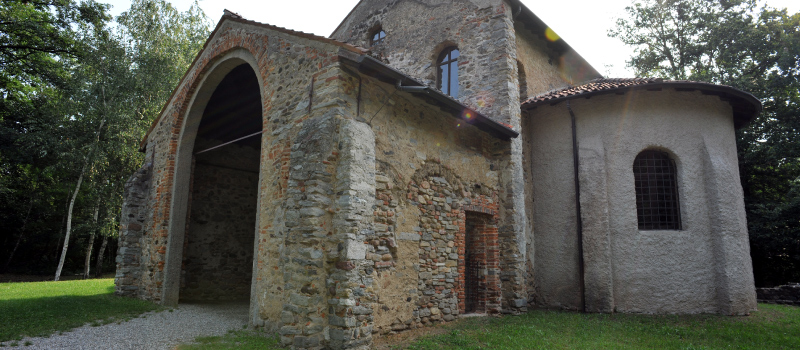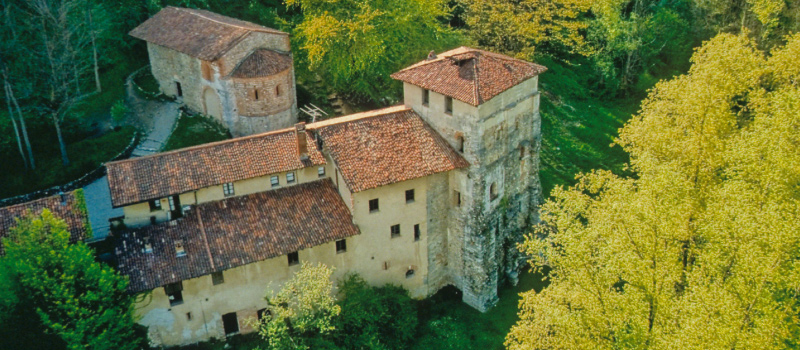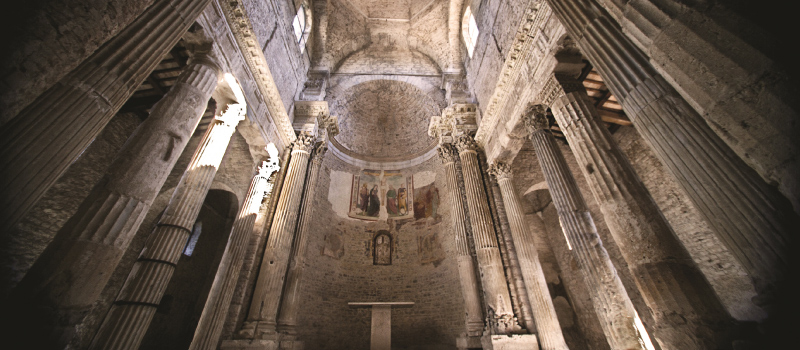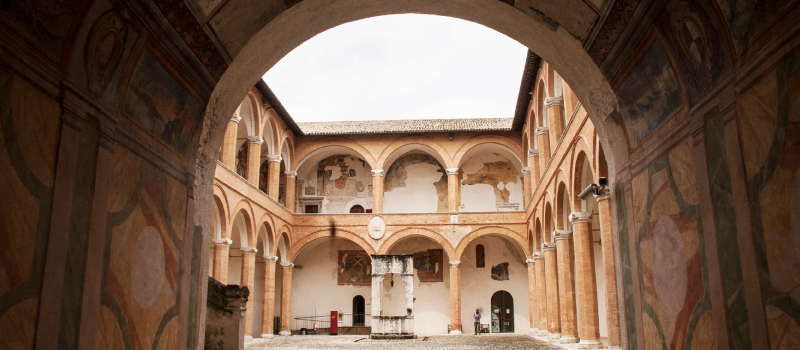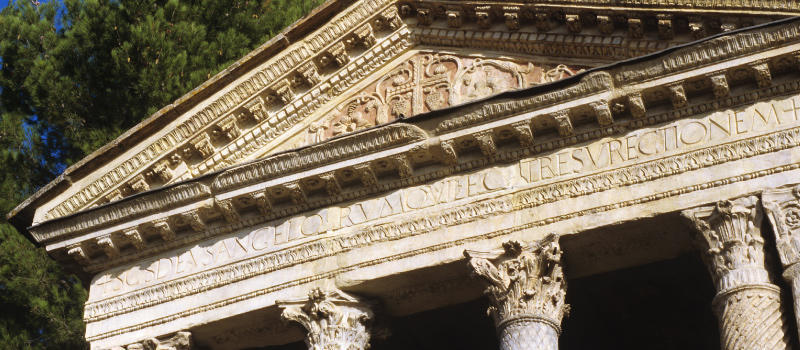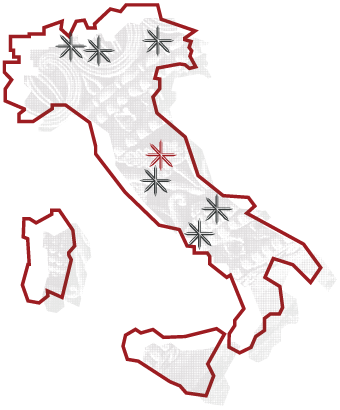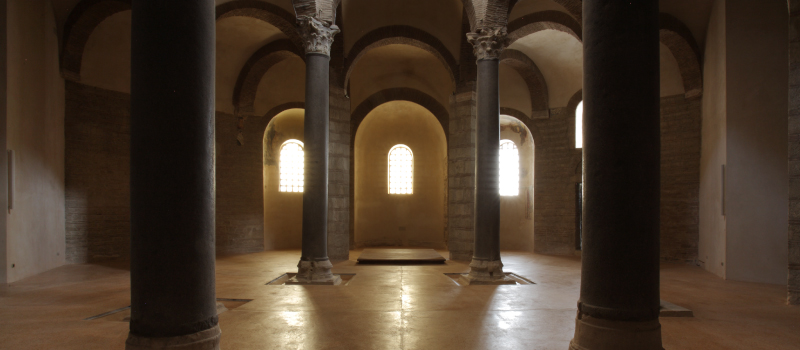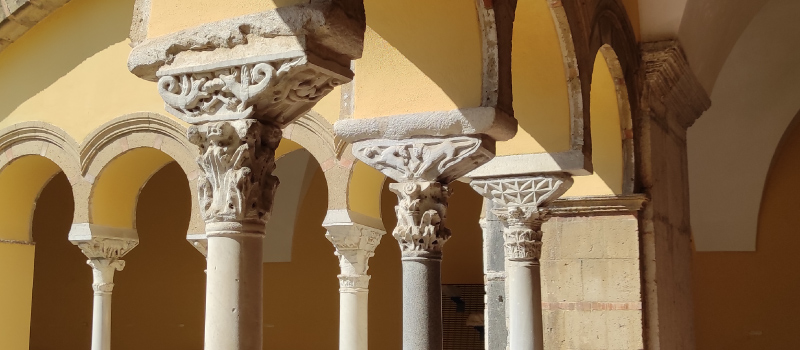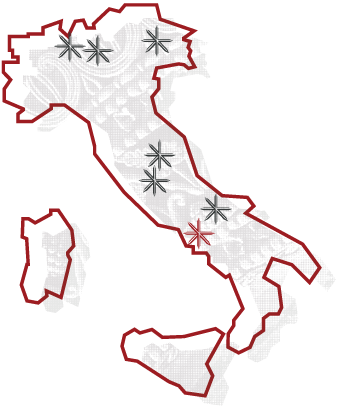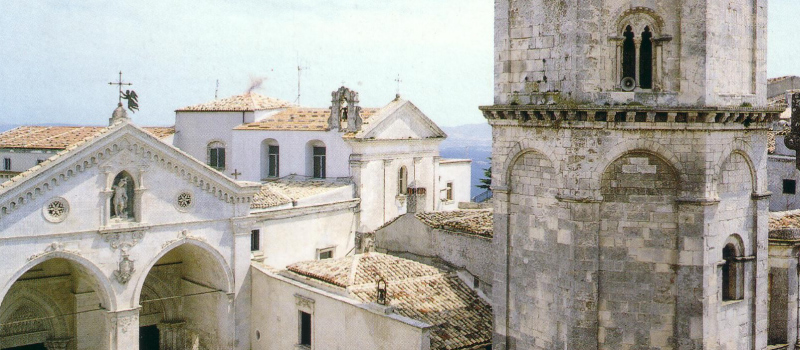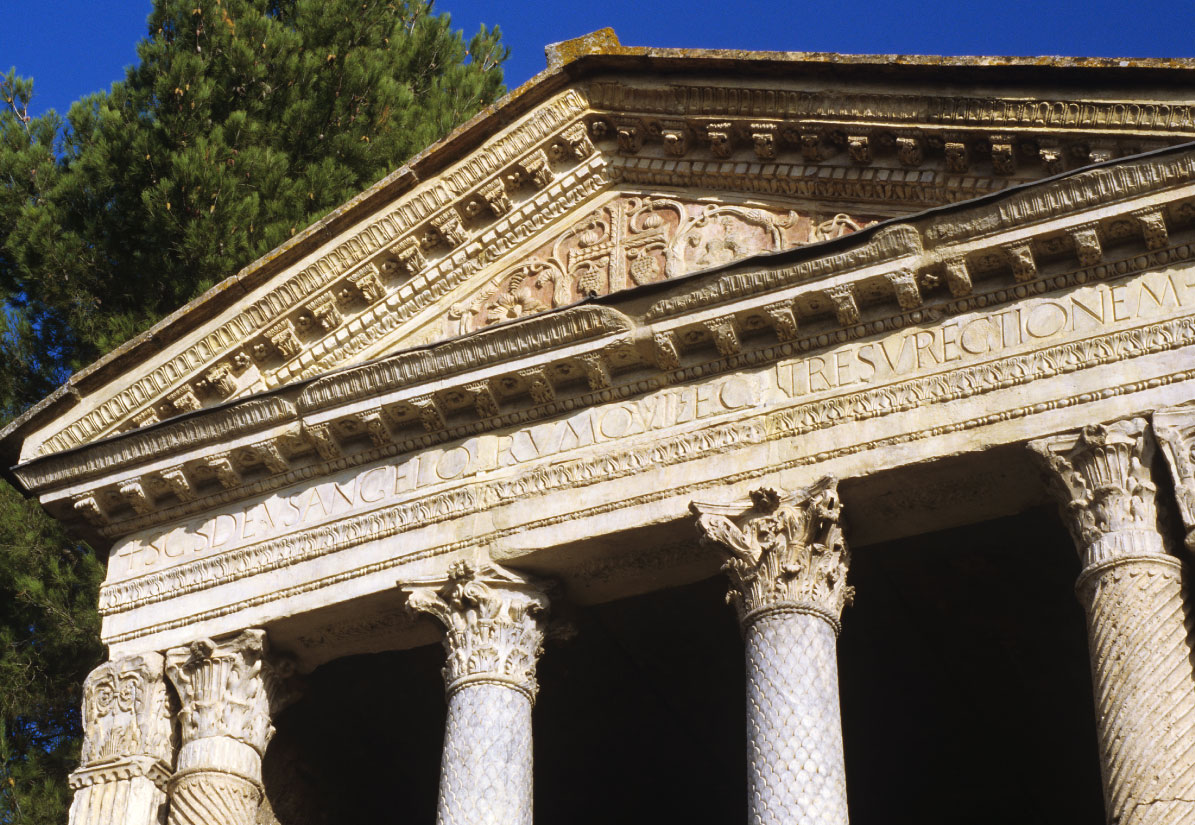the Tempietto del Clitunno
Lombard church with classical architecture
The Clitunno ‘Temple’ is a small chapel in the form of a tetrastyle Corinthian temple in antis with two lateral porticos.
The façade is punctuated by splendid leaf-covered columns and an architrave which bears an inscription invoking God written in Roman square capitals; it is one of the very rare specimens of Early Medieval monumental epigraphy.
Its careful design and expert reuse of ancient architectural components unites the ‘Temple’ with San Salvatore in Spoleto.
Inside there are wall-paintings of remarkable quality, which have been compared to those in the presbytery of Santa Maria Antiqua in Rome; the frescoes frame a marble shrine in the apse constructed with a mixture of reused architectural items and newly-made decorations.
The original use of the Lombard ‘Temple’
The morphological eccentricity of the Clitunno ‘Temple’ has given rise to various interpretations regarding its original function.
Scholars have proposed quite different dates for this building, ranging from Late Antiquity (4th – 5th century), to the Lombard era (7th – 8th century), to the renewed use of Classical styles that occurred in the Spoleto area during the Romanesque period (12th – 13th century).
This discrepancy of opinions derives first of all from the building’s outstanding uniqueness, and is intertwined with the many unsolved questions concerning it: the reasons for the return to a Classical architectural model for a building evidently linked to Christian worship, whether it was originally a religious building, the possible identification of phases of construction, the clear distinction between reused pieces and their mode of adoption.

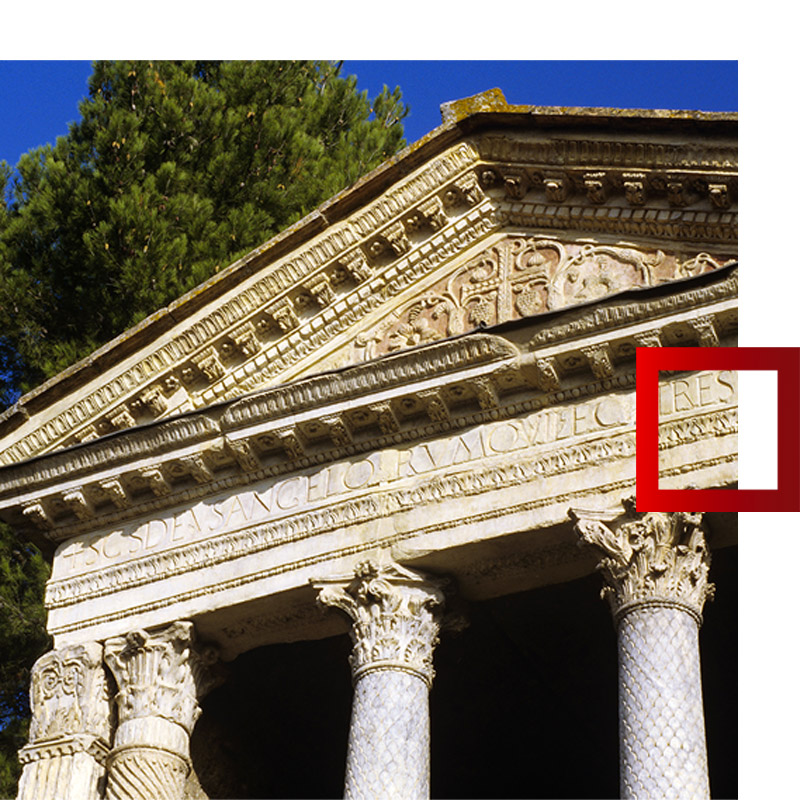
A building that aspires to prestige
The establishment of the Lombard Duchy of Spoleto by Faroald took place shortly after the Lombards’ arrival in Italy. Like that of Benevento, this duchy in central Italy with its capital in Spoleto also remained largely independent until AD 729, when it came under control of the Lombard king. The latest studies suggest that the Clitunno ‘Temple’ was associated with the period of Spoleto’s independence.
Together with the church of San Salvatore, located on the edge of the city of Spoleto, it clearly manifests a taste for prestigious architecture that is found in all the other duchies, in the north and south, and constitutes an expression of the aspirations of the Lombard elites.
Sporadic documentary evidence suggests that the Lombard elites in Italy commissioned prestigious buildings from the outset (palaces and residences, but also churches and chapels), on the model of their Roman predecessors, in order to legitimize their position and authority.
Roman-style sculptures
They were designed and executed in such a convincing, skilful and deceptive way that they even managed to convince the 16th century architect Palladio that the ‘Tempietto’ was a Roman temple – and continue to mislead and amaze scholars still today.

Visit
Info e contacts
Via del Tempio, 1, 06042 Pissignano PG
Tel. 0743 3275085
Mail. pm-umb@beniculturali.it
Website
VUOTO
Tickets
Full € 3,00
Reduced € 2,00
Free for citizens of the European Union under 18, subject to the discounts provided for in the regulations for access to Italian cultural sites.
Opening hours
Opening hours from May 1 to May 31:
Monday 10:00 AM – 6:00 PM
Tuesday closed
Wednesday 10:00 AM – 6:00 PM
Thursday 10:00 AM – 6:00 PM
Friday 10:00 AM – 6:00 PM
Saturday 10:00 AM – 6:00 PM
Sunday 10:00 AM – 6:00 PM
Opening hours from June 1 to June 14:
Monday 10:00 AM – 7:00 PM
Tuesday closed
Wednesday 10:00 AM – 7:00 PM
Thursday 10:00 AM – 7:00 PM
Friday 10:00 AM – 7:00 PM
Saturday 10:00 AM – 7:00 PM
Sunday 10:00 AM – 7:00 PM
